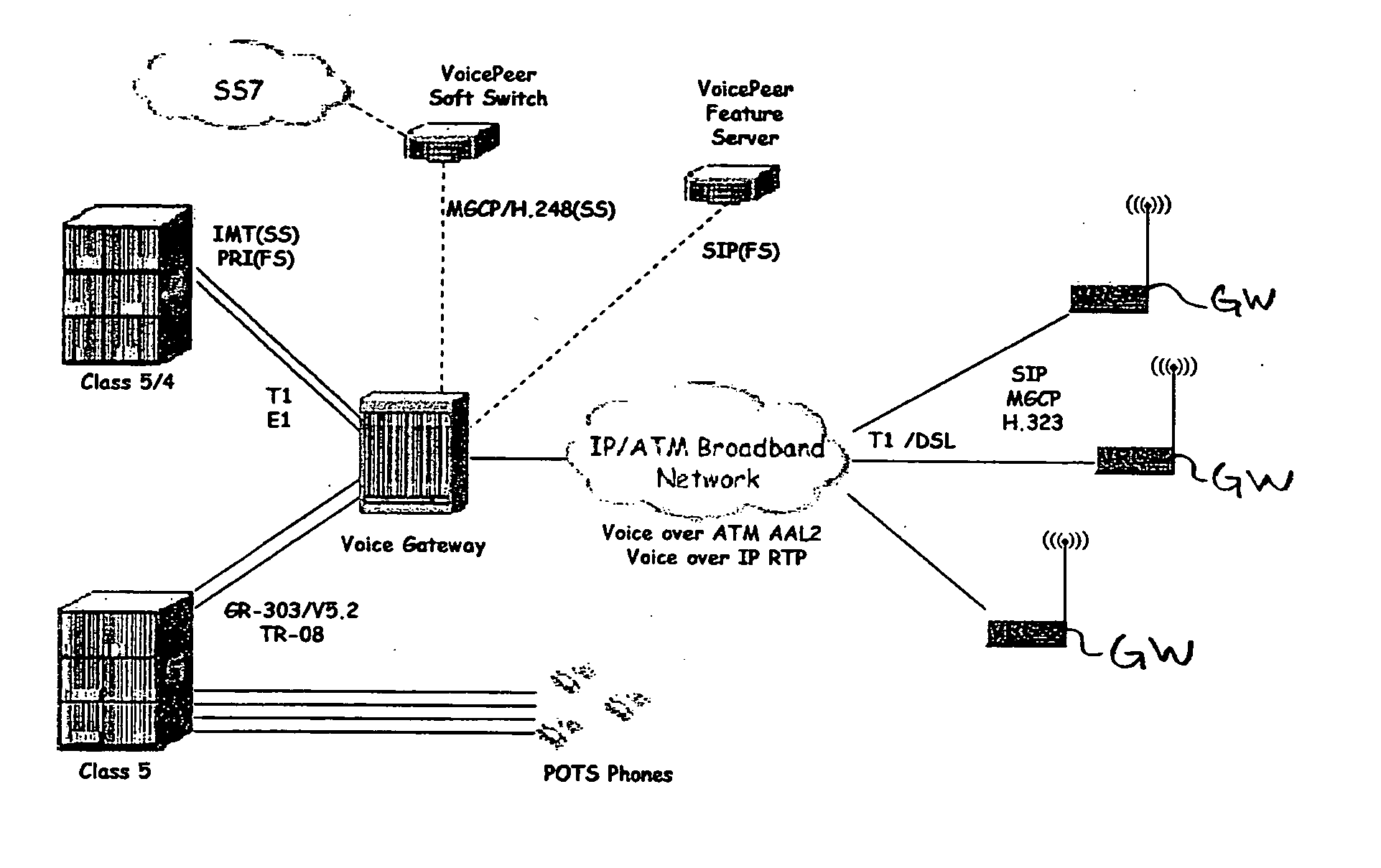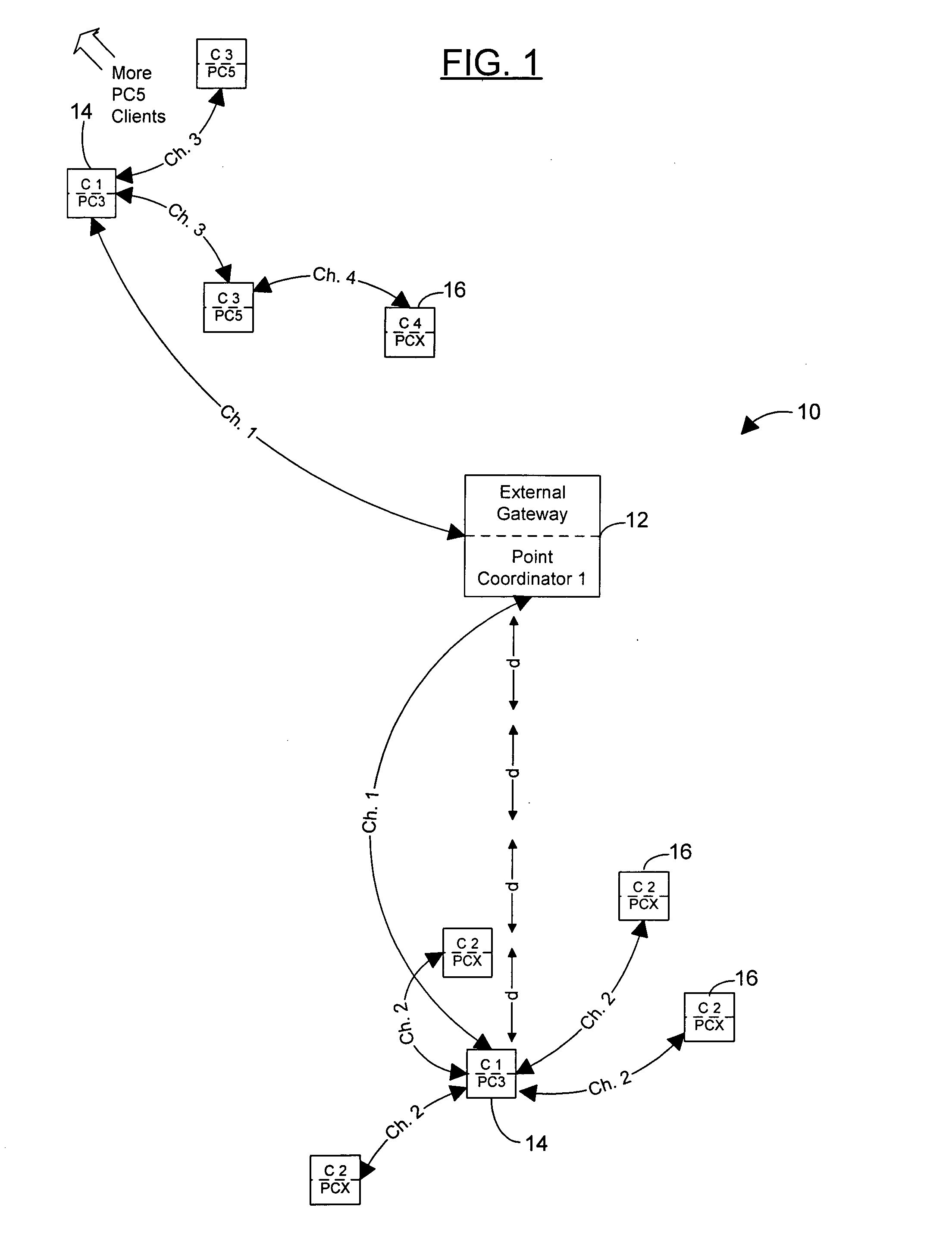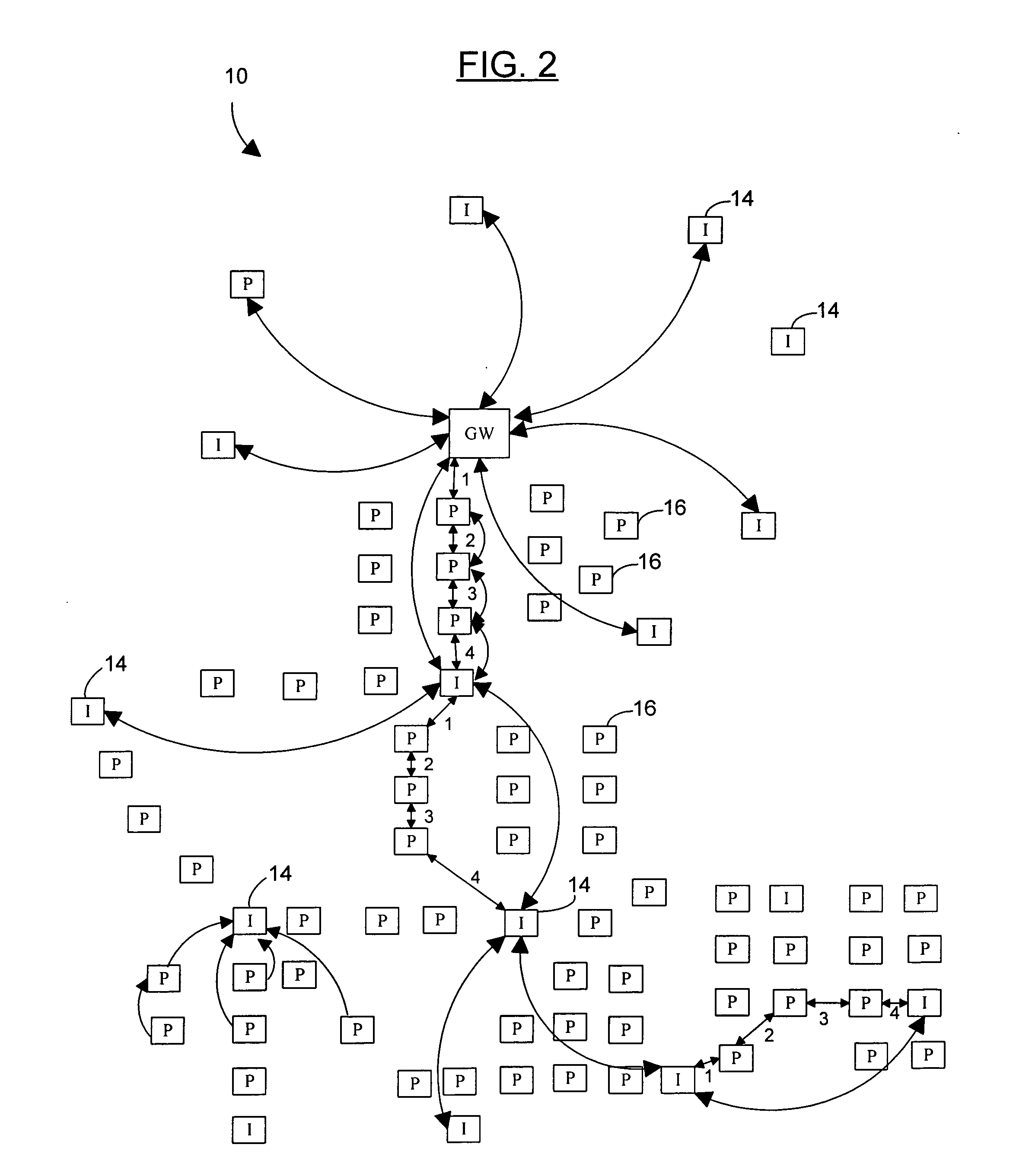Multi-hop peer-to-peer wireless local loop phone system and method
a wireless local loop and phone system technology, applied in the field of peer-to-peer wireless local loop phone system, can solve the problems of expensive towers that must be installed to provide coverage for the geographic area, towers that must provide enough connections for all local phone calls, and the need for phone service, so as to minimize the number of hops, minimize the latency added, and maximize the throughput around the gateway
- Summary
- Abstract
- Description
- Claims
- Application Information
AI Technical Summary
Benefits of technology
Problems solved by technology
Method used
Image
Examples
Embodiment Construction
[0027] Referring now to the drawings, and particularly to FIGS. 1-2, a preferred embodiment of the peer-to-peer wireless local loop phone system of the present invention is shown and generally designated by the reference numeral 10.
[0028] In FIG. 1, a new and improved peer-to-peer wireless local loop phone system 10 of the present invention for providing local phone service without the use phone lines or central base stations with a peer-to-peer multi-hop wireless phone terminal is illustrated and will be described, with only the central portion of the network shown. More particularly, the peer-to-peer wireless local loop phone system 10 has a unit 12 external gateway connected to the PSTN or to the internet or other backbone gateway of some kind. Next the system 10 is comprised of peer-to-peer (P2P) units, which are not homogenous in their function, but take on different roles. The Gateway 12 connects to the infrastructure units 14 by radio transceivers, and the infrastructure uni...
PUM
 Login to View More
Login to View More Abstract
Description
Claims
Application Information
 Login to View More
Login to View More - R&D
- Intellectual Property
- Life Sciences
- Materials
- Tech Scout
- Unparalleled Data Quality
- Higher Quality Content
- 60% Fewer Hallucinations
Browse by: Latest US Patents, China's latest patents, Technical Efficacy Thesaurus, Application Domain, Technology Topic, Popular Technical Reports.
© 2025 PatSnap. All rights reserved.Legal|Privacy policy|Modern Slavery Act Transparency Statement|Sitemap|About US| Contact US: help@patsnap.com



